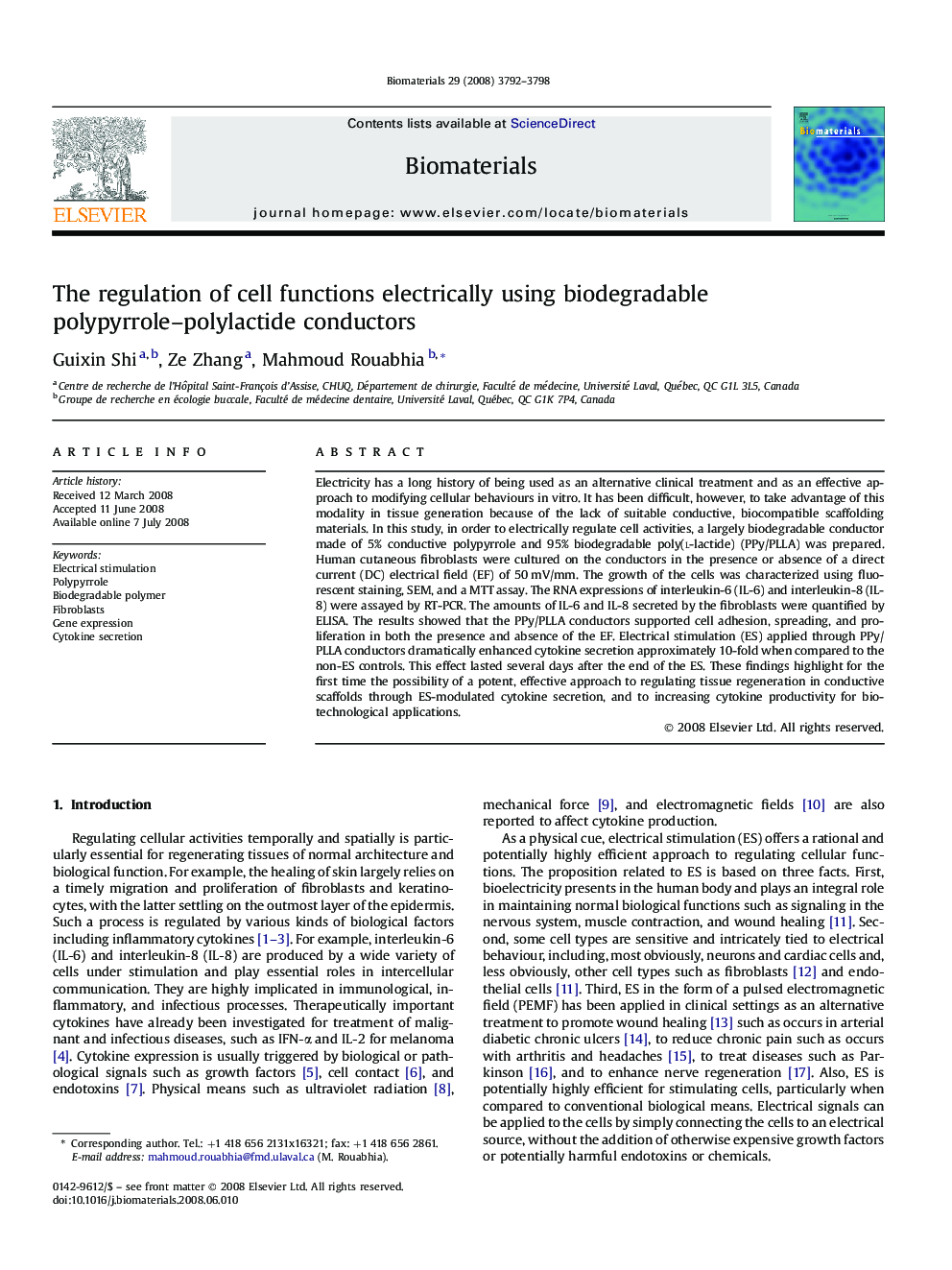| Article ID | Journal | Published Year | Pages | File Type |
|---|---|---|---|---|
| 9875 | Biomaterials | 2008 | 7 Pages |
Electricity has a long history of being used as an alternative clinical treatment and as an effective approach to modifying cellular behaviours in vitro. It has been difficult, however, to take advantage of this modality in tissue generation because of the lack of suitable conductive, biocompatible scaffolding materials. In this study, in order to electrically regulate cell activities, a largely biodegradable conductor made of 5% conductive polypyrrole and 95% biodegradable poly(l-lactide) (PPy/PLLA) was prepared. Human cutaneous fibroblasts were cultured on the conductors in the presence or absence of a direct current (DC) electrical field (EF) of 50 mV/mm. The growth of the cells was characterized using fluorescent staining, SEM, and a MTT assay. The RNA expressions of interleukin-6 (IL-6) and interleukin-8 (IL-8) were assayed by RT-PCR. The amounts of IL-6 and IL-8 secreted by the fibroblasts were quantified by ELISA. The results showed that the PPy/PLLA conductors supported cell adhesion, spreading, and proliferation in both the presence and absence of the EF. Electrical stimulation (ES) applied through PPy/PLLA conductors dramatically enhanced cytokine secretion approximately 10-fold when compared to the non-ES controls. This effect lasted several days after the end of the ES. These findings highlight for the first time the possibility of a potent, effective approach to regulating tissue regeneration in conductive scaffolds through ES-modulated cytokine secretion, and to increasing cytokine productivity for biotechnological applications.
